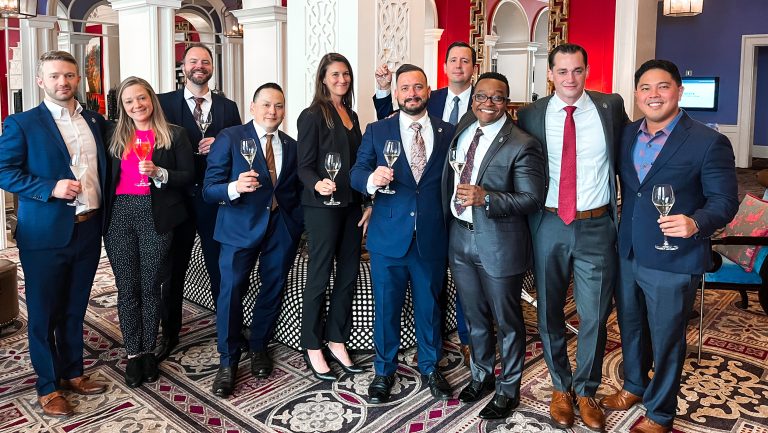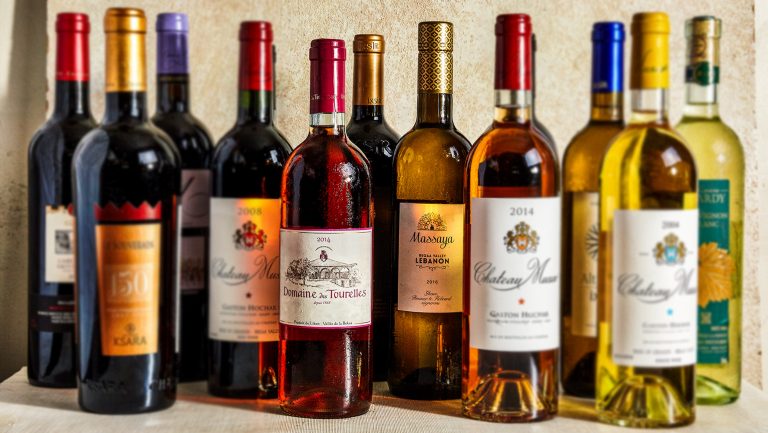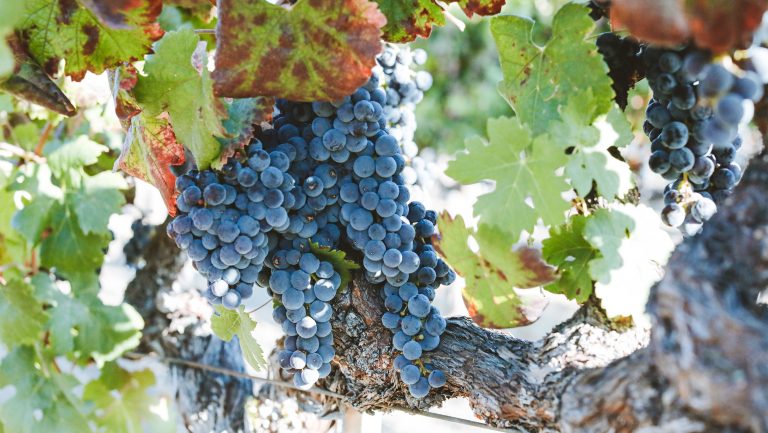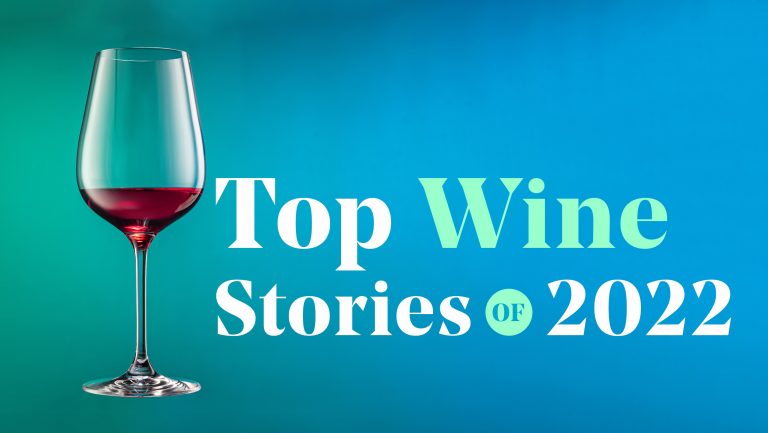Our wine coverage took on many forms in 2022, ranging from scientific deep dives to the latest in sustainability and expert educational insights. One of many reports in our ongoing sustainability series, we took a look at how the wine world and its suppliers are shrinking the carbon footprint of the glass bottle. Readers dug into the challenges and opportunities that come with higher levels of UV light in vineyards and stashed away expert study tips from the 2022 class of Master Sommeliers. But our most popular wine story this year surrounded California’s Merlot crisis, which was widely shared as producers discussed their struggle to find the grape.
5. The Science Behind UV Light in Vineyards
Wine regions that receive higher levels of UV light are finding it comes with unexpected challenges—and benefits

Catena Institute’s Adrianna Vineyard lies at almost 1,500 meters, high up in the Andes, and the temperature is much cooler than in the lower-lying areas east of Mendoza. “It’s like Burgundy compared to Châteauneuf-du-Pape,” says Fernando Buscema, the executive director of the Catena Institute of Wine. But despite the cooler air, vineyard workers complained that the intensity of the sun made it too warm for them to work there. That, Buscema says, combined with the better quality of fruit coming from the higher elevation vineyard, prompted an investigation into the effects of ultraviolet light on grape growing.

Don’t miss the latest drinks industry news and insights. Sign up for our award-winning newsletters and get insider intel, resources, and trends delivered to your inbox every week.
What the Catena Institute and other researchers like Lincoln University in New Zealand discovered was that in the vineyard a certain band of ultraviolet light called UV-B punches above its weight in terms of its impact on the grapes and resulting wines.
In the vineyard, UV light can be just as important as temperature. It can have profound effects on the development of flavor, color, and fermentation activity. In certain places, managing this light in the vineyard can be a careful balancing act. SevenFifty Daily spoke with the researchers and producers investigating the topic to better understand how UV light affects grape growing and winemaking. [Read more]
4. 10 New Master Sommeliers Share Their Road Maps to Success
There are fewer than 300 Master Sommeliers in the world. Here’s how 10 wine professionals from around the country earned the title in 2022

Over two days in late August 2022 candidates from across North America experienced the service and tasting portions of the Master Sommelier Diploma Examination in Portland, Oregon. Forty-five individuals from 16 states and three countries sat for the exam—and by the end of two days of testing, 10 people had passed, earning the Master Sommelier title from the Court of Master Sommeliers, Americas.
SevenFifty Daily caught up with the newest class of Master Sommeliers to learn their study strategies, advice for people taking the test in the future, and how they celebrated this monumental accomplishment. [Read more]
3. Exploring the World of Lebanese Wine—Beyond Chateau Musar
New energy, a return to indigenous grape varieties, and experimental techniques make it high time to explore the full spectrum of Lebanon’s wines

Among industry-favorite wine producers like Champagne Jacques Selosse, López de Heredia, and Giuseppe Rinaldi, all from famous wine regions, there is often one outlier: Chateau Musar, a Lebanese wine producer that has amassed a cult-like following among U.S. wine professionals. But while Chateau Musar’s popularity within the wine trade has put Lebanon on the U.S. radar as a winemaking country, it has also barred many American wine professionals from getting to know the whole of Lebanon’s winemaking culture.
The reality is that Lebanon is home to a dynamic wine industry, one that has grown exponentially—in both size and style—in recent years. “A lot of what wine lovers want in their wines today are readily presented in this postage-sized country,” says May Matta-Aliah, a Lebanon native and New York-based wine educator, ambassador, and consultant who runs In the Grape. “High altitude cultivation, dry farming, organic farming, hand harvesting, and native grape varieties are all hallmarks of what Lebanese wines represent.”
As intrepid and traditional winemakers explore the whole of Lebanon’s varied terroir, experiment with viticulture and vinification techniques, and resurrect the country’s indigenous varieties, it’s high time to explore the full spectrum of Lebanese wines—beyond Chateau Musar. [Read more]
2. The Shrinking Footprint of Glass Wine Bottles
How the wine world and its suppliers are dealing with the problematic carbon emissions of its favored packaging

When it comes to packaging wine, glass is a miracle and a curse. As its manufacturers will tell you, it’s sturdy, which enables shelf life; it’s inert, so it doesn’t react with the liquid to create off tastes; it doesn’t have the health risks or pollutant problems of plastic; and it can be washed and reused multiple times. It is completely and endlessly recyclable.
But glass has downsides, admits James V. Nordmeyer, the vice president of global sustainability for the glass producer O-I: “It’s heavier, and it is energy intensive.” In a world in need of emissions reductions, therein lies the rub. As the wine industry struggles to shrink its carbon footprint, producers have discovered that more than half their greenhouse gasses are due to the shipping and manufacture of their glass bottles.
With governments now mandating climate goals for nations and businesses, however, suppliers and third-party entrepreneurs are working on new technologies and products to help make glass more sustainable. They’re not only lightening the vessel; they’re overhauling the furnaces, the material’s composition, and the infrastructures to create a glass bottle industry that can make it to net zero. [Read more]
1. The New California Merlot Crisis
Northern California wineries that rely on Merlot for Bordeaux-style blends and varietal wines are struggling to secure enough high-quality grapes. What’s driving this shortage and what can be done to fix it?

Since its founding in 1972, Jordan Vineyard & Winery in Healdsburg has produced a Cabernet Sauvignon that, according to winemaker Maggie Kruse, often “just skirts by” California’s requirement that at least 75 percent of the wine be made from the named grape variety. Like many of France’s top producers, Jordan has always used Merlot to help tame Cabernet Sauvignon’s tannins and add red-fruit flavor.
Merlot is critical to wineries that produce Bordeaux-style blends—but over the last 20 years, it’s become increasingly challenging to find. According to data from the USDA’s annual grape reports, California winemakers crushed 305,000 tons of Merlot in 2000 and 310,000 tons in 2010. The volume fell to 220,000 tons in 2019—a year in which total tons crushed in California surpassed both the 2000 and 2010 vintages.
Napa vintners are also struggling to find the famous blender. Joshua Lowell, the general manager of Sullivan Rutherford Estate in Rutherford, believes in Napa, there is little to no top-quality Merlot growing on high-quality soils with the same meticulous farming methods used to produce Cabernet Sauvignon. Although it hasn’t always been this way, in this day and age, “Merlot plays second fiddle—or third or fourth—to Cabernet,” he notes. That’s a problem for brands like his that make both Bordeaux-style blends and varietal Merlots. [Read more]

Dispatch
Sign up for our award-winning newsletter
Don’t miss the latest drinks industry news and insights—delivered to your inbox every week.






